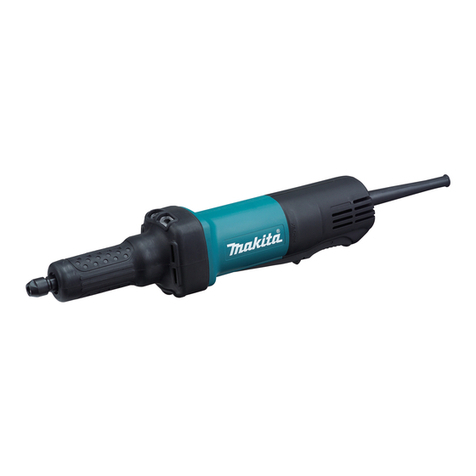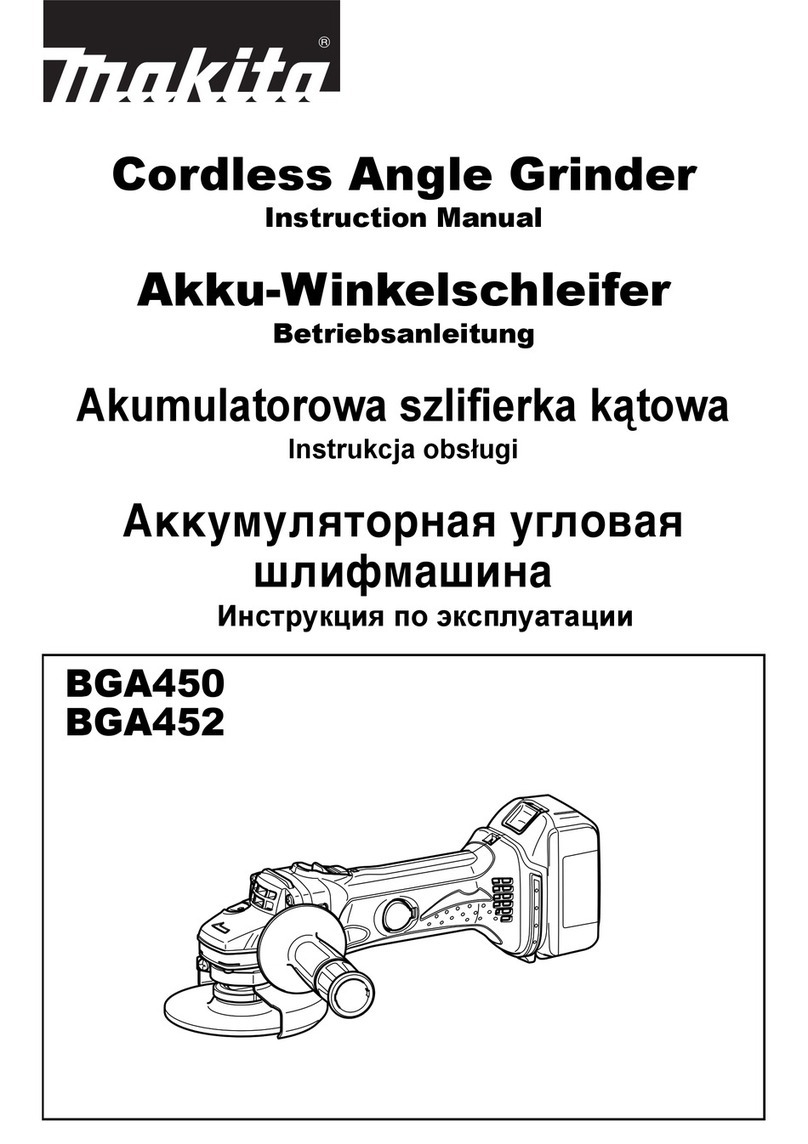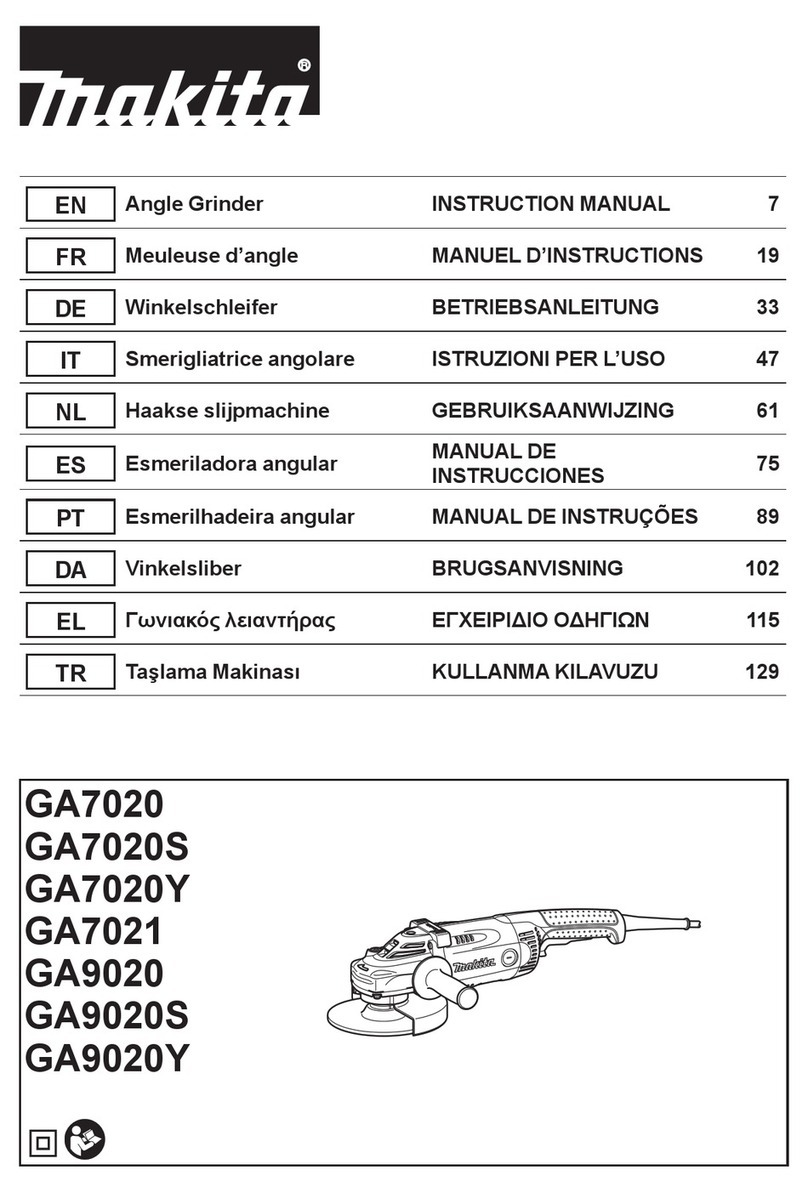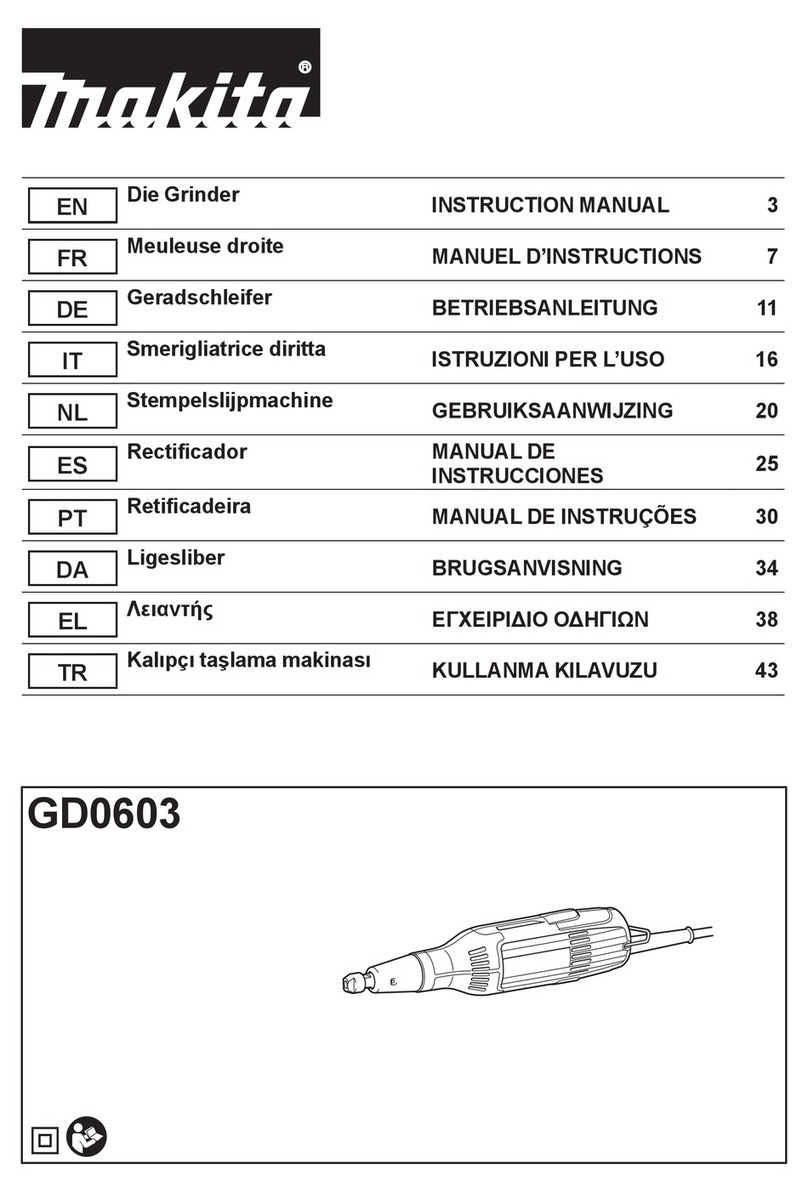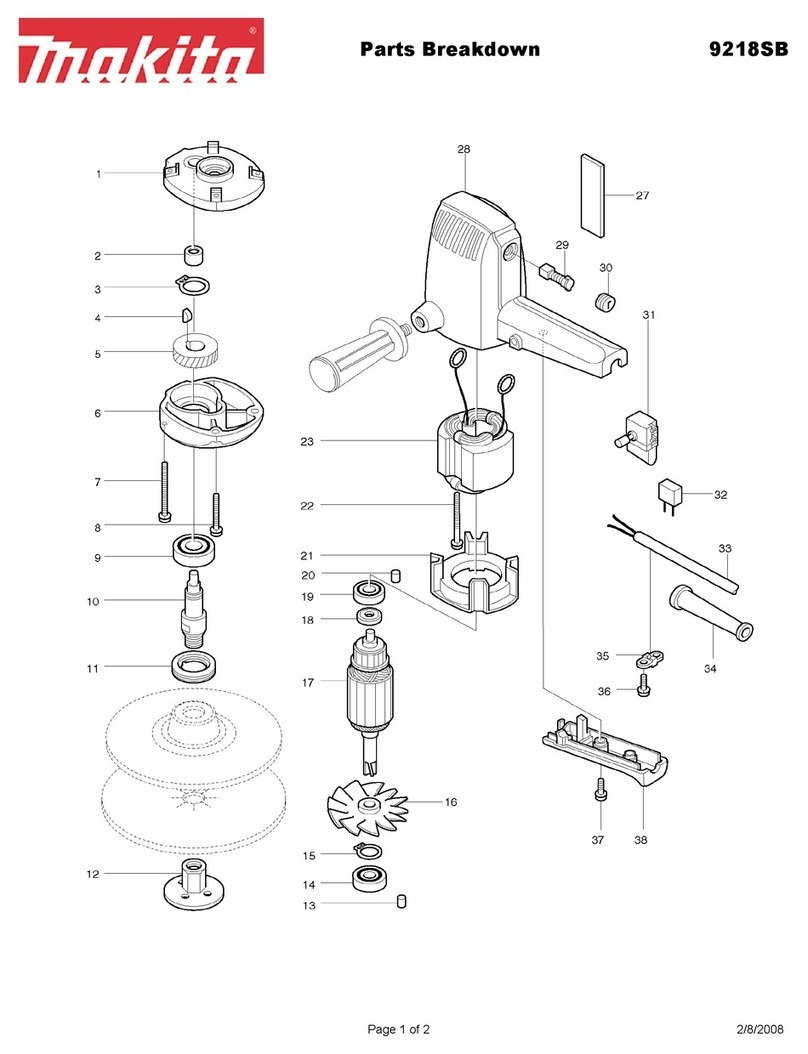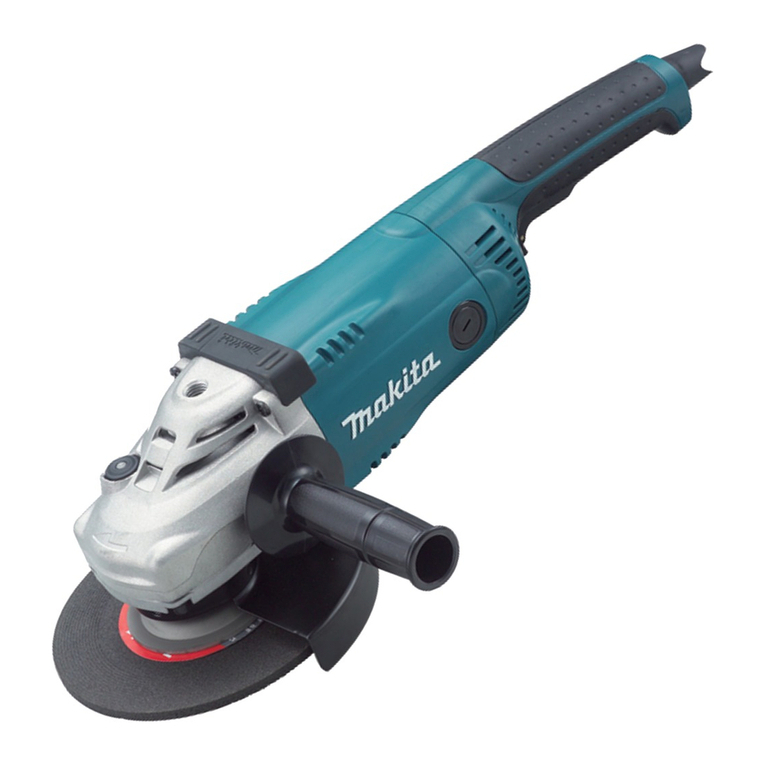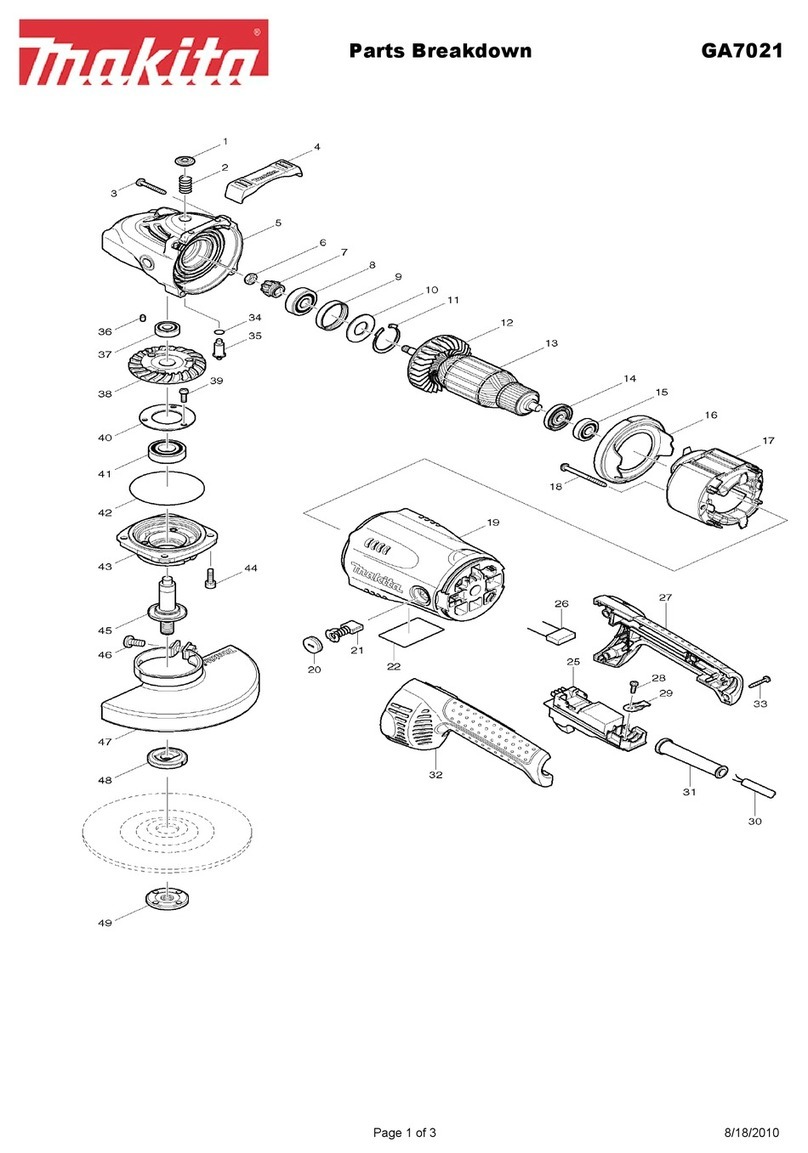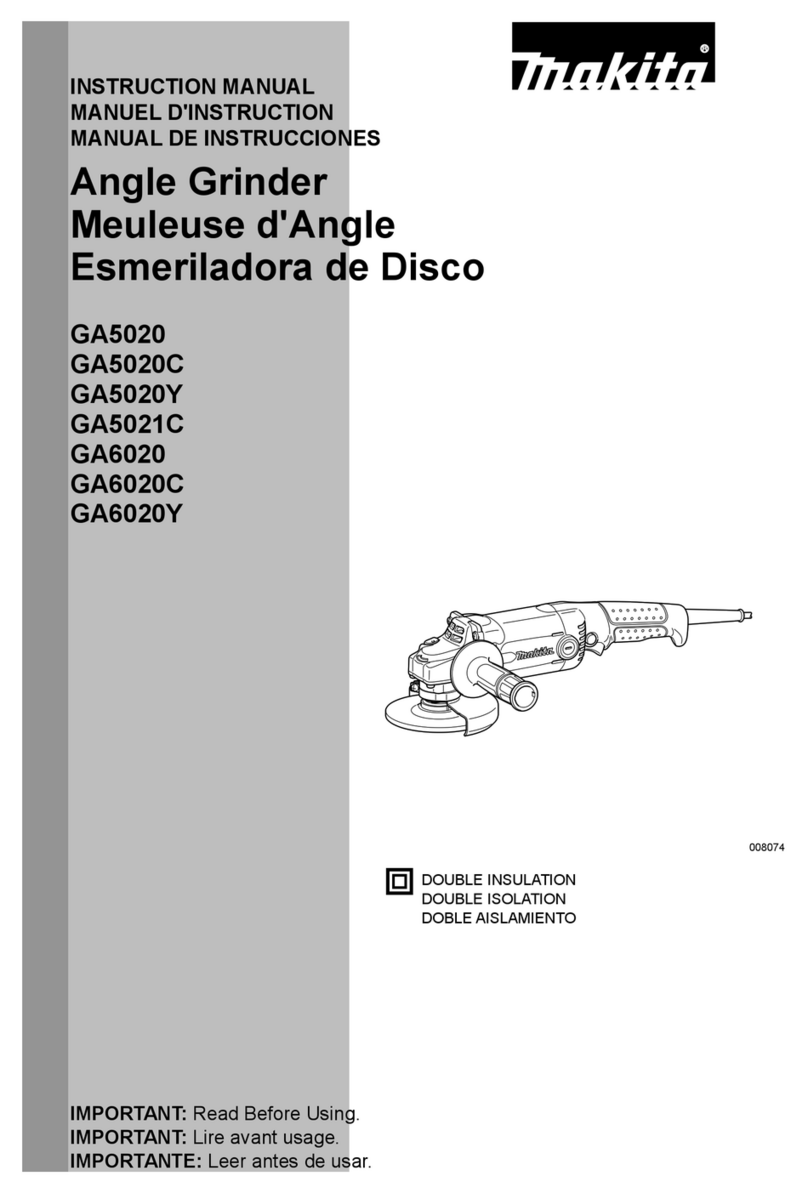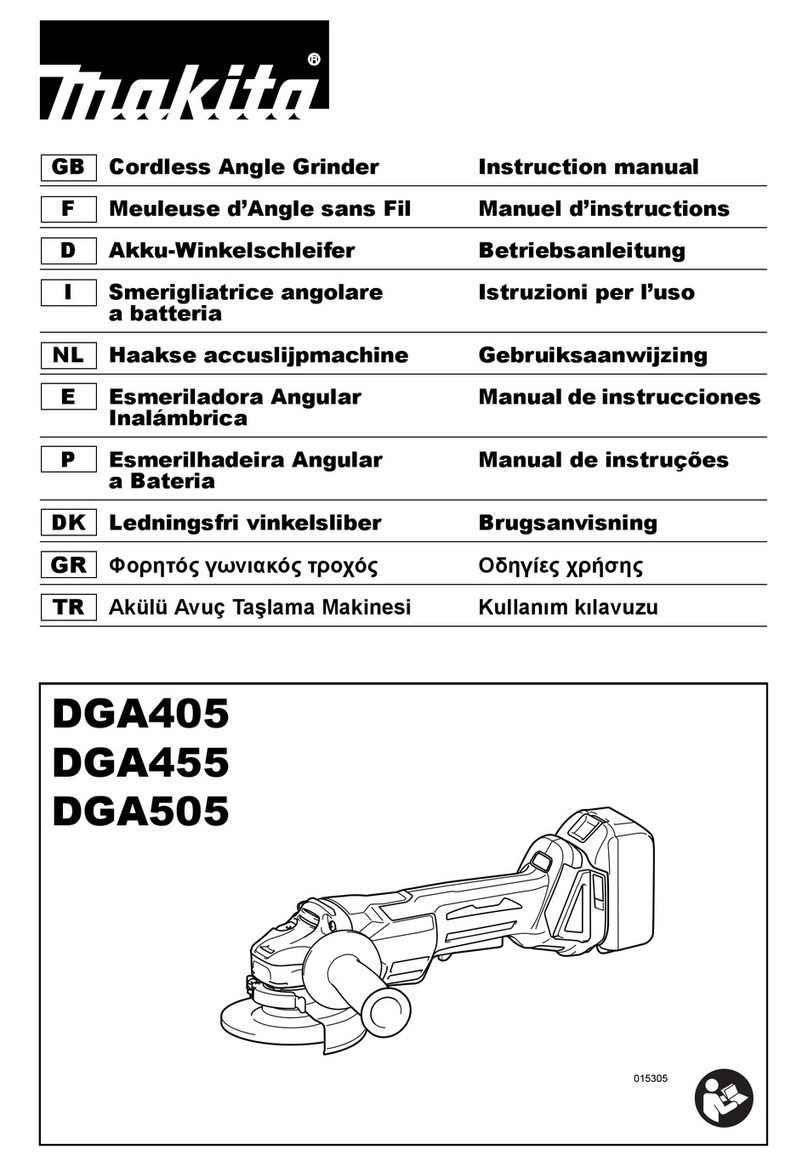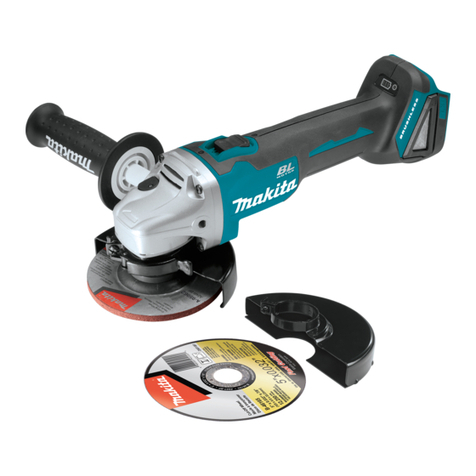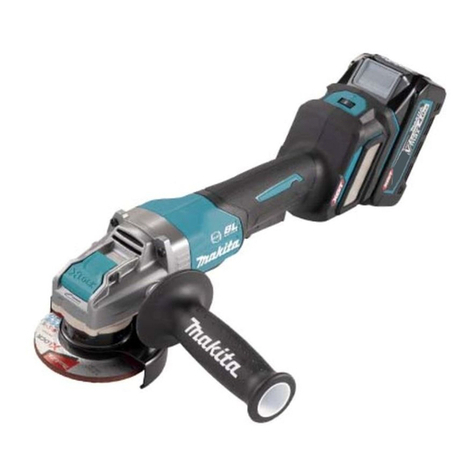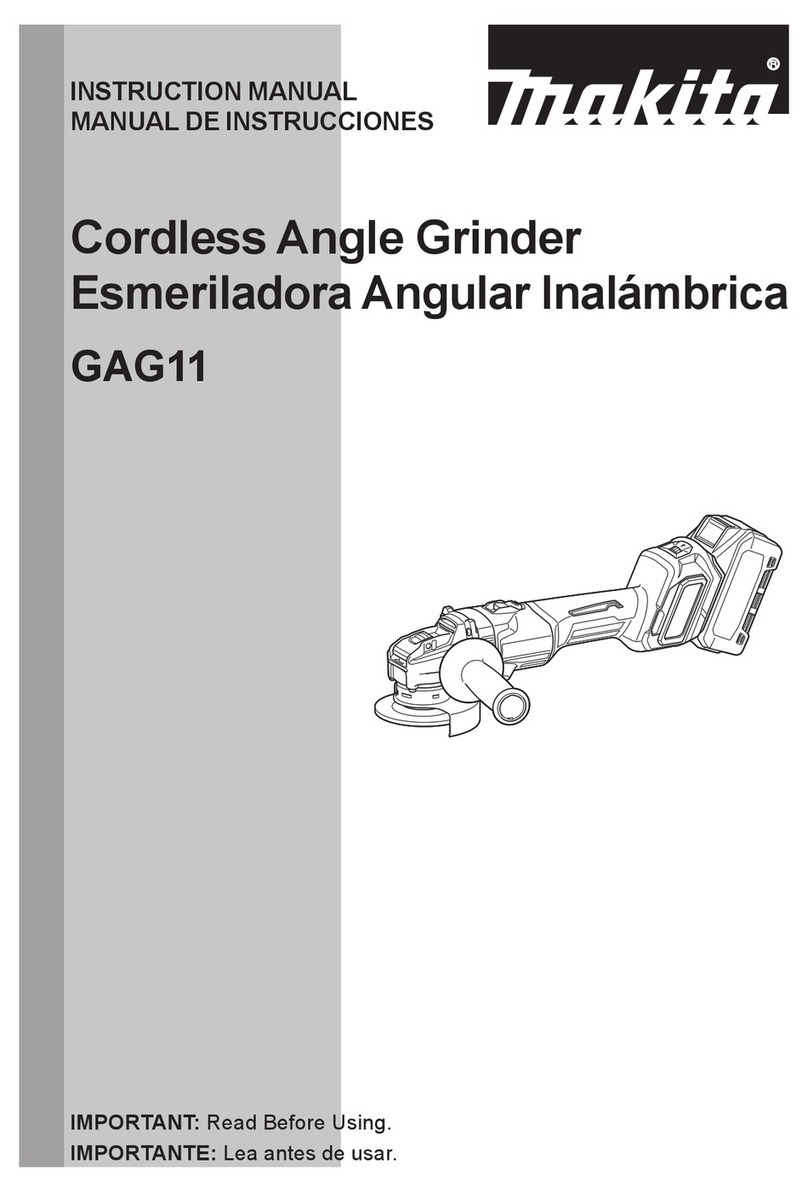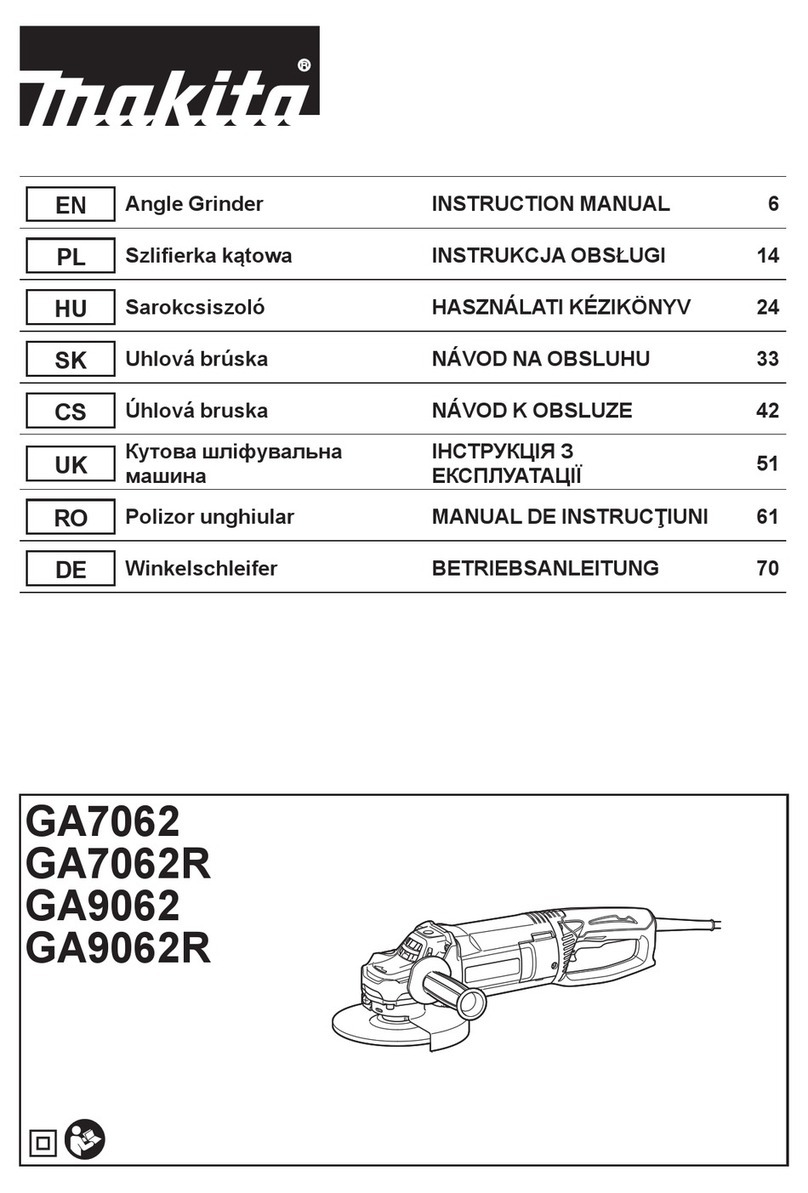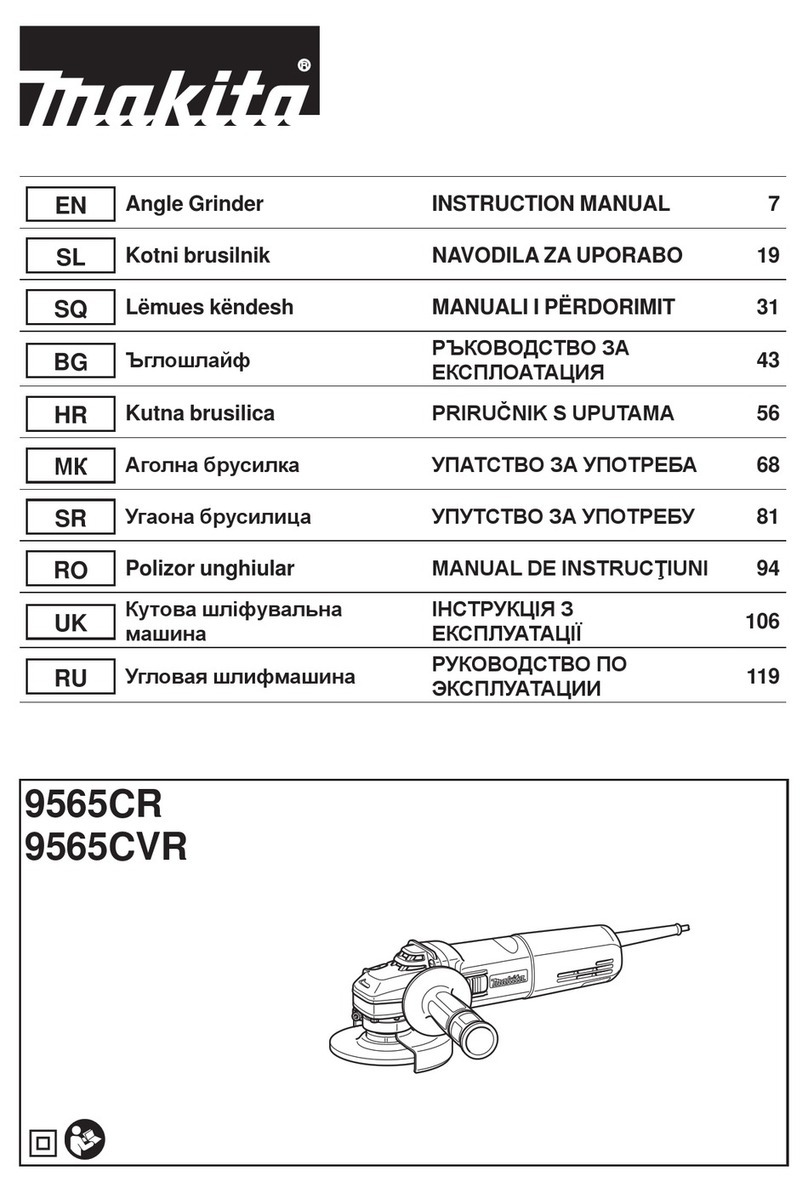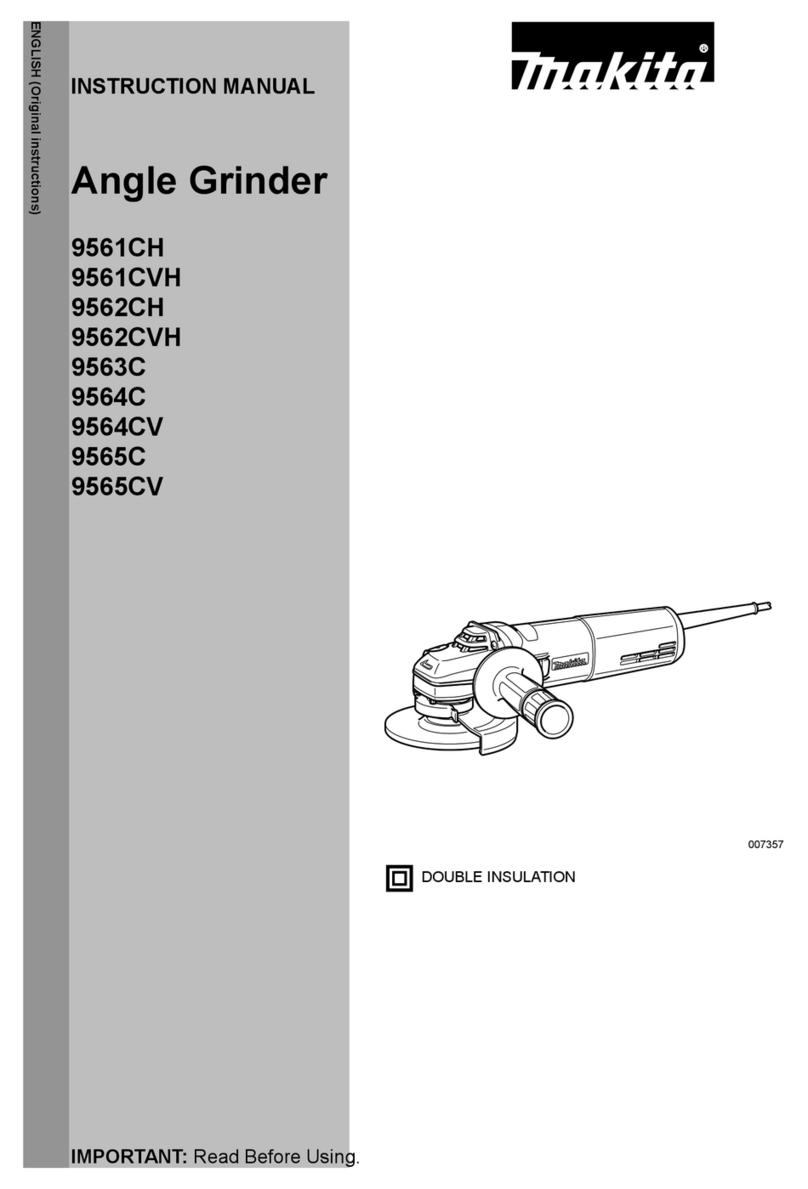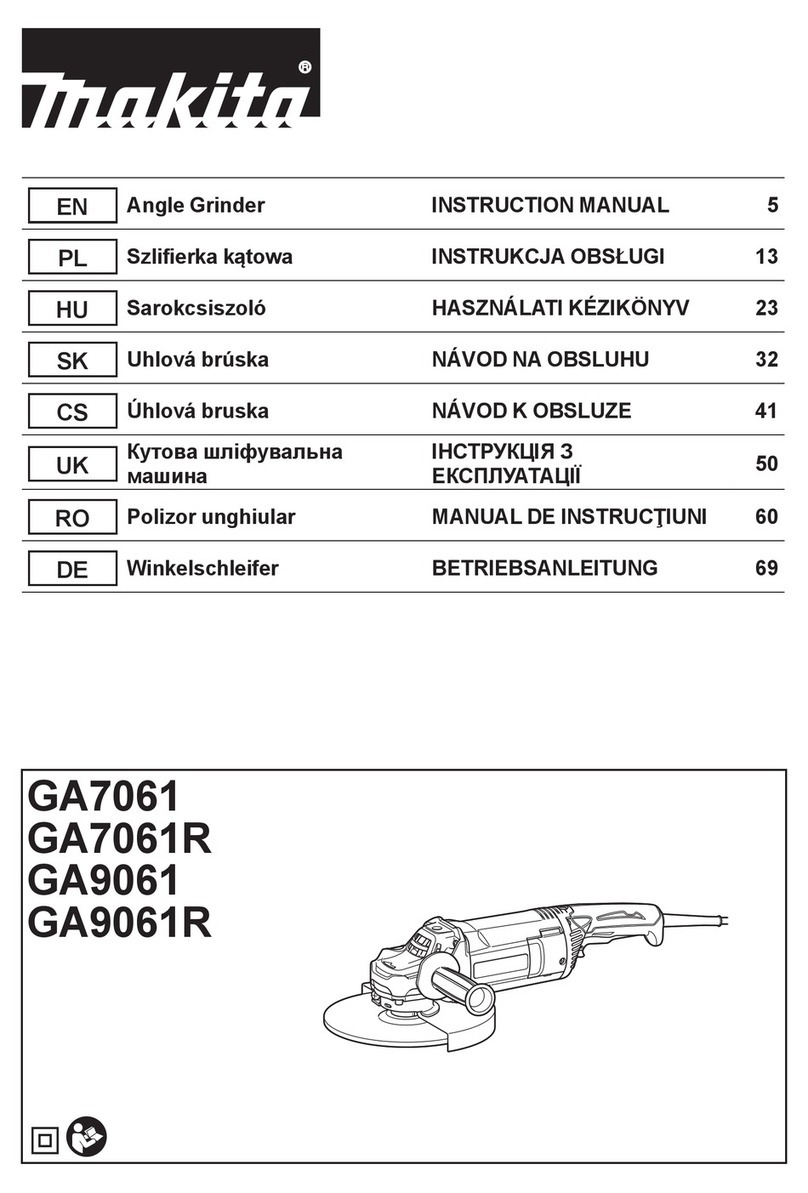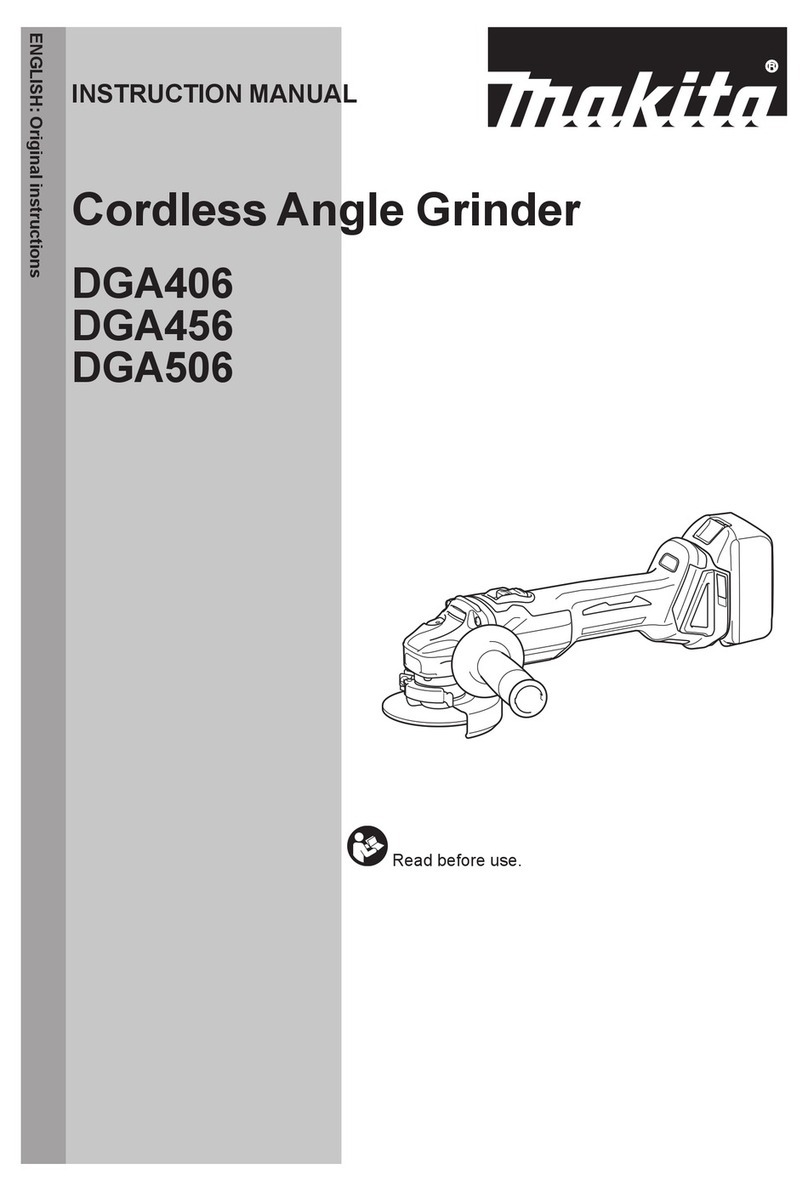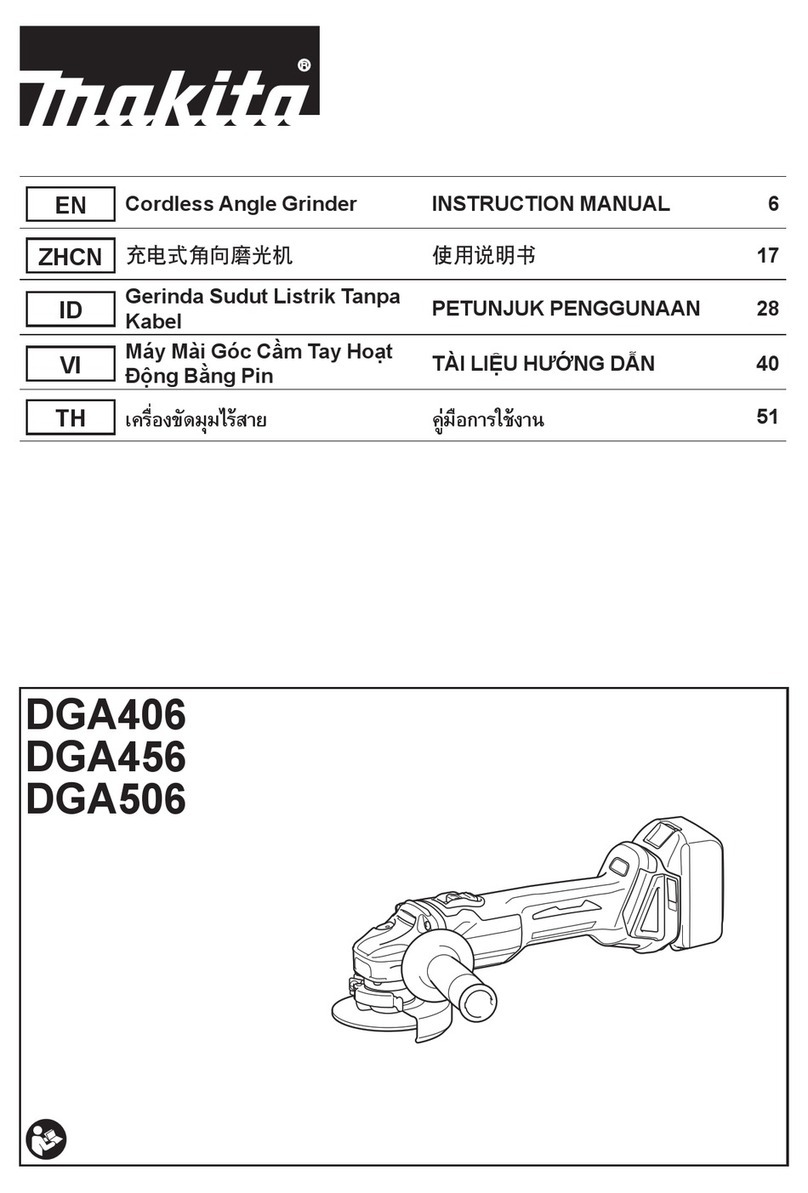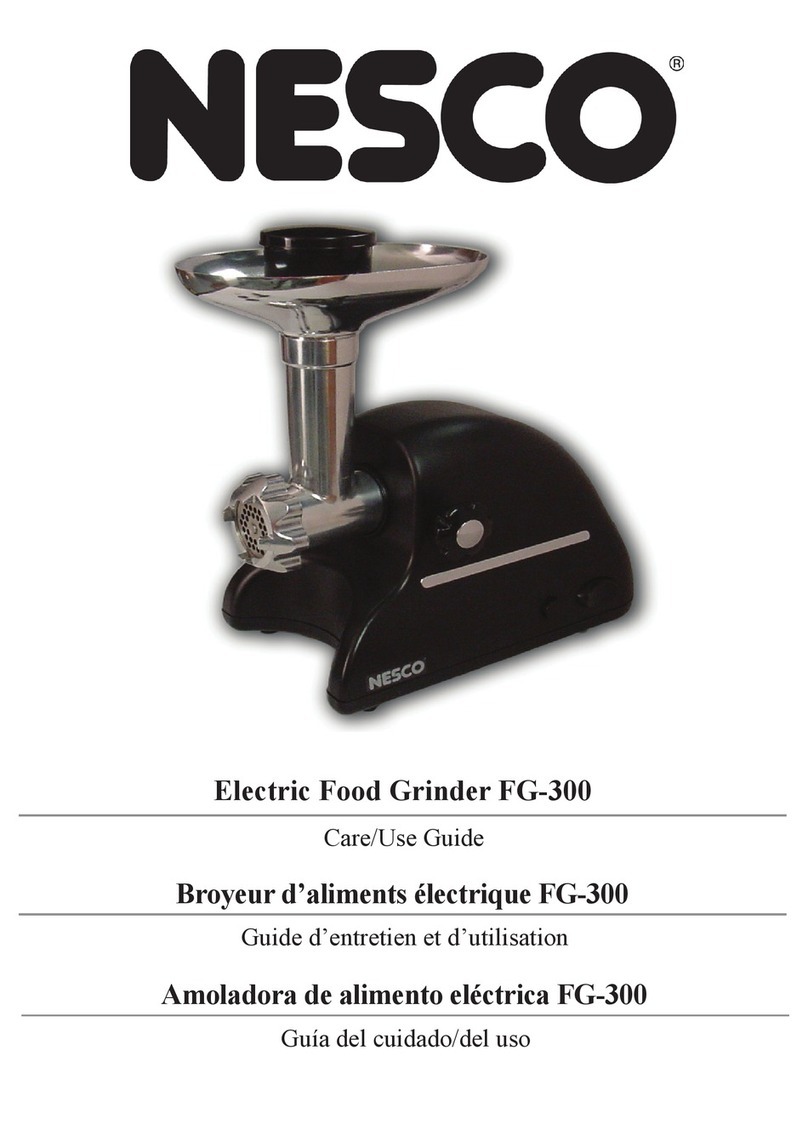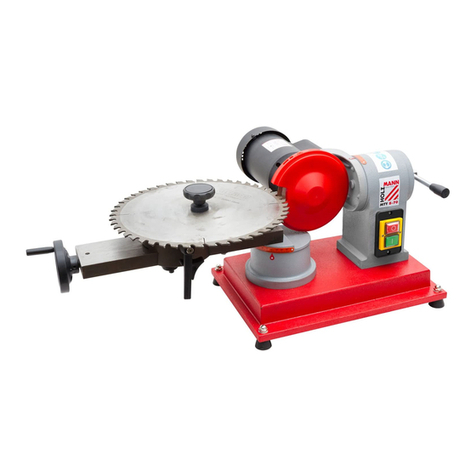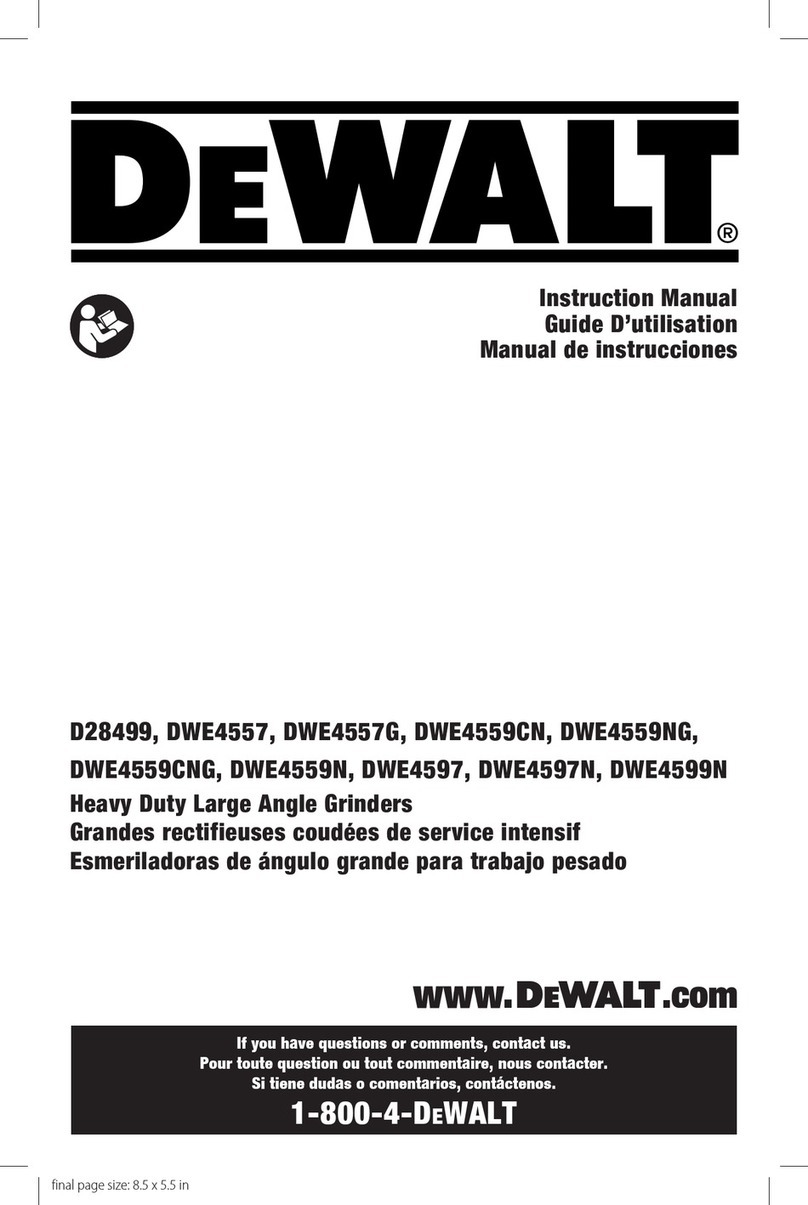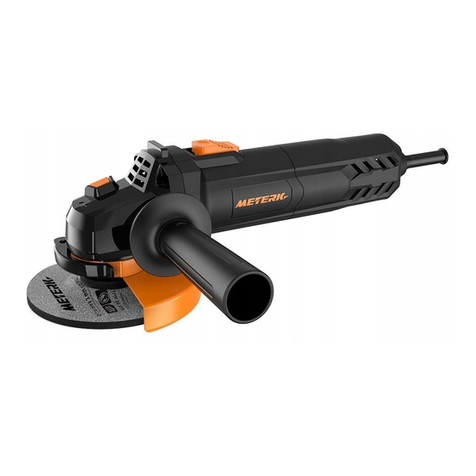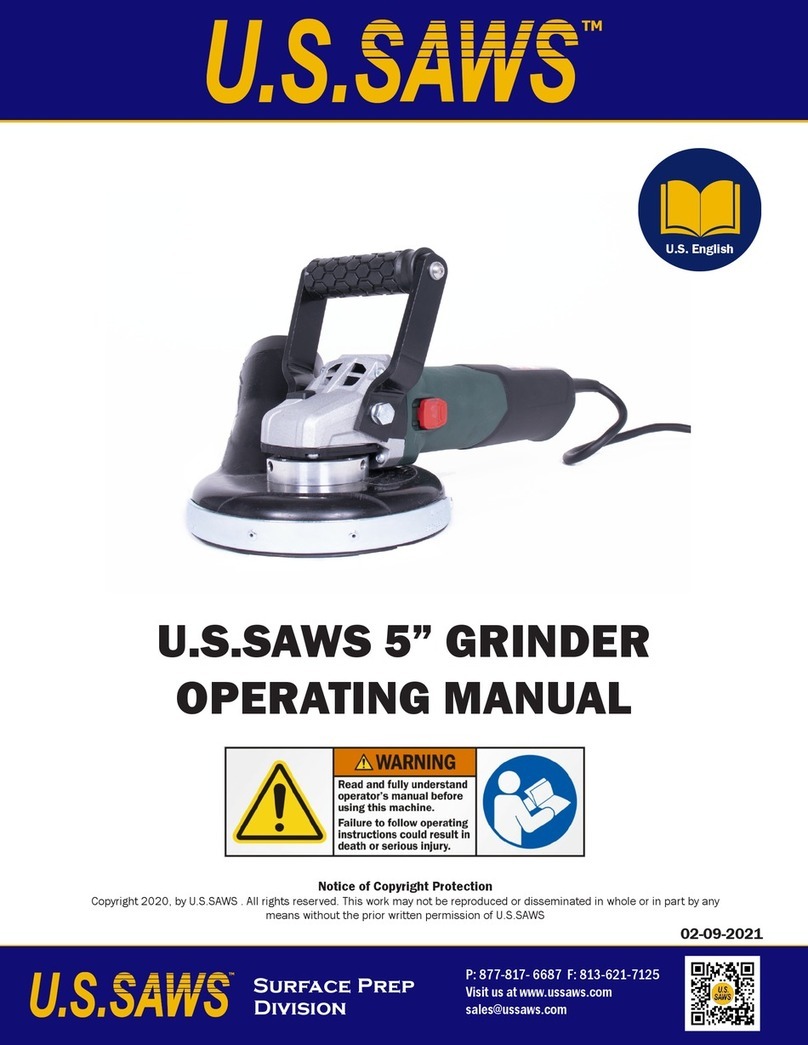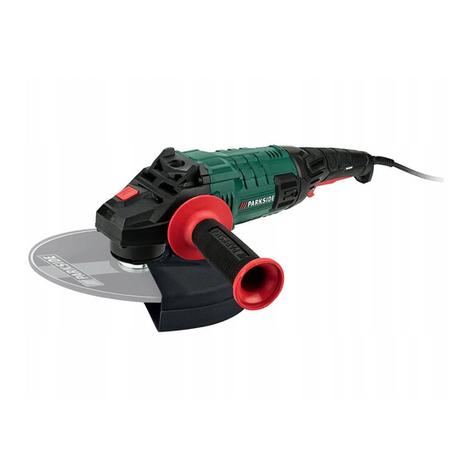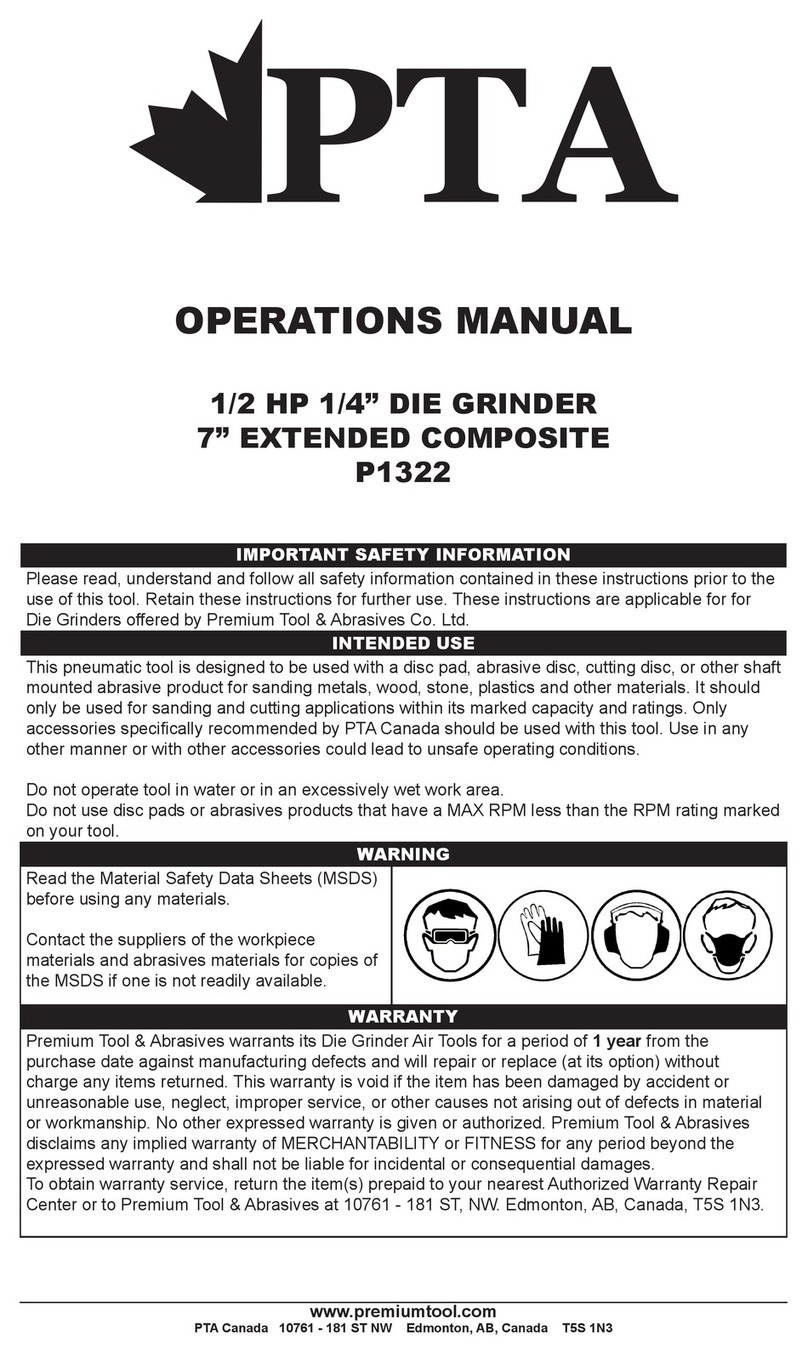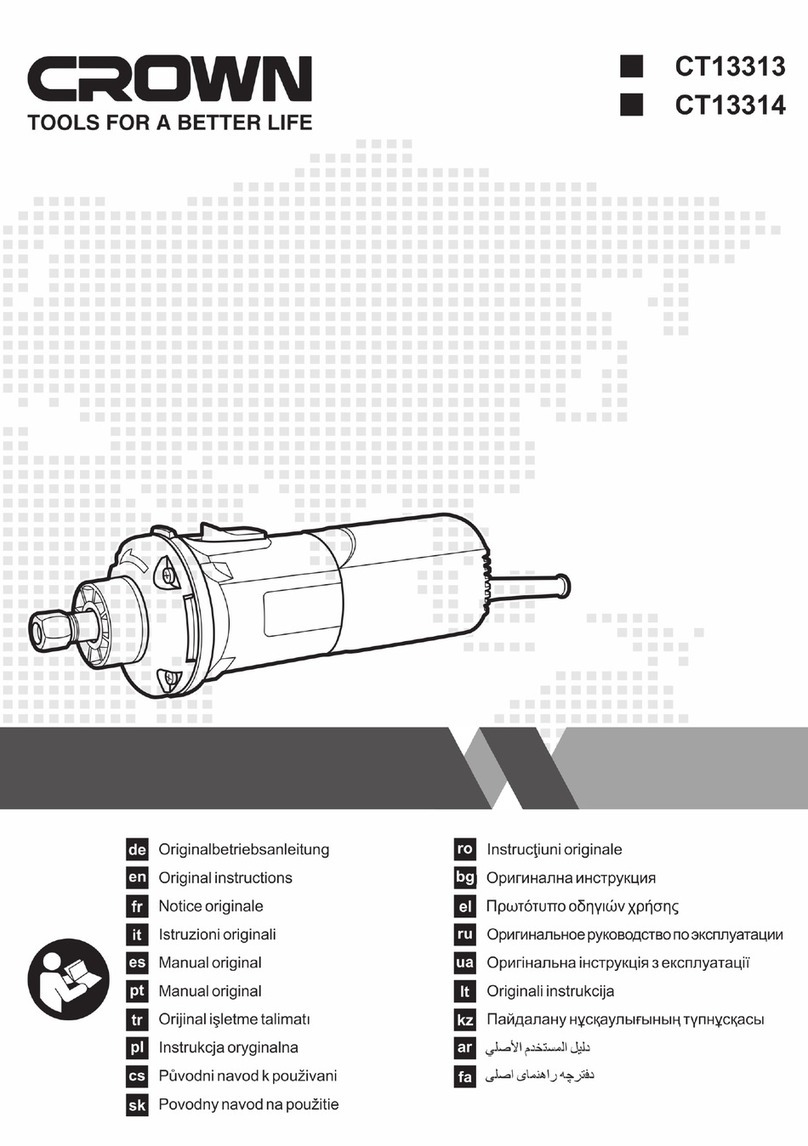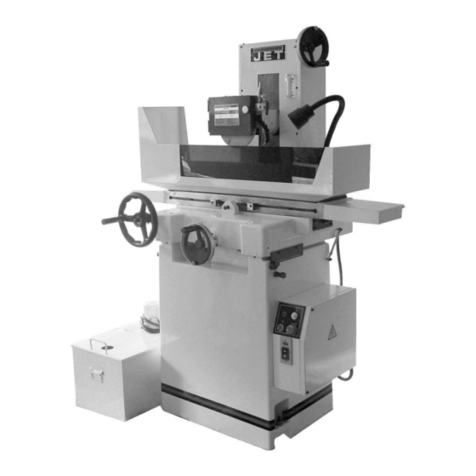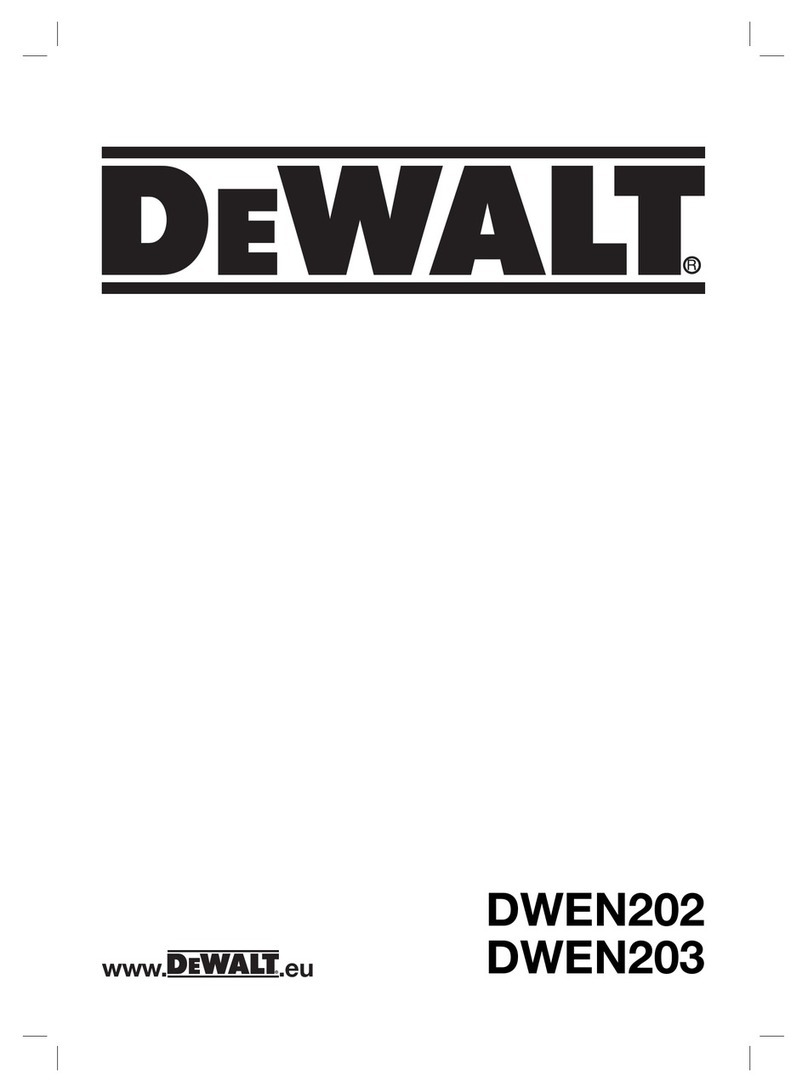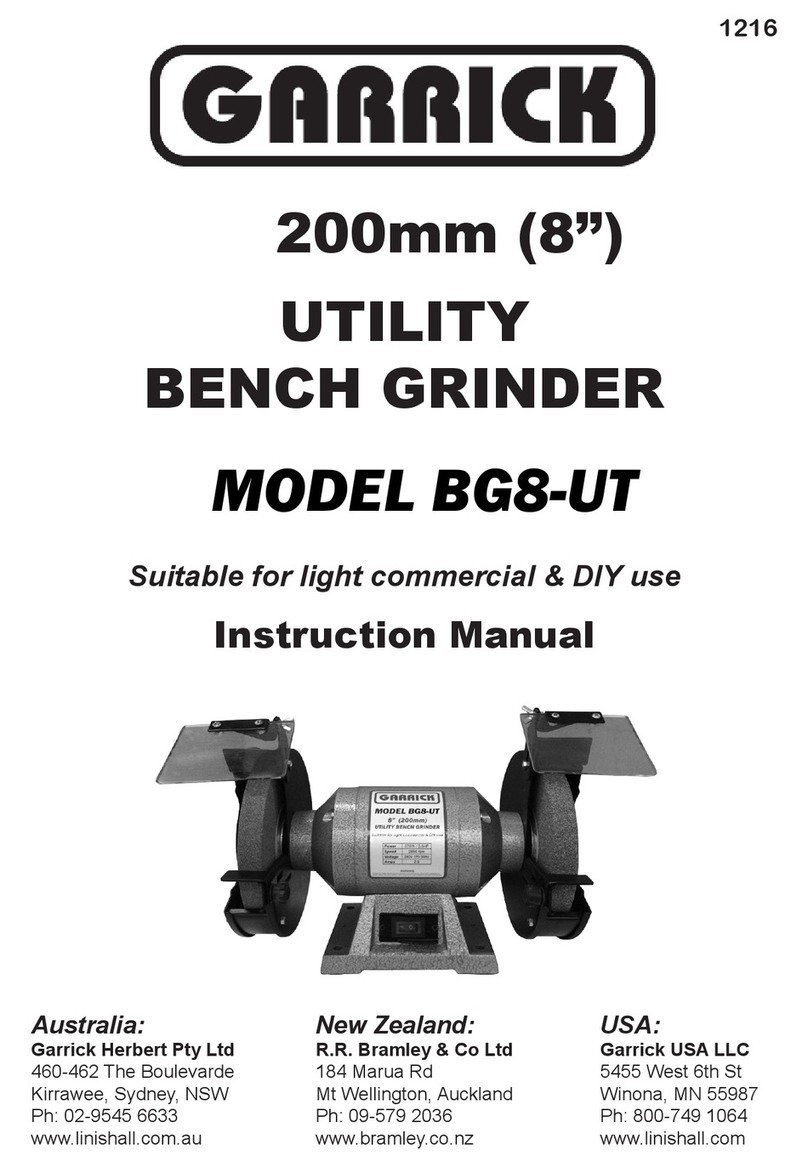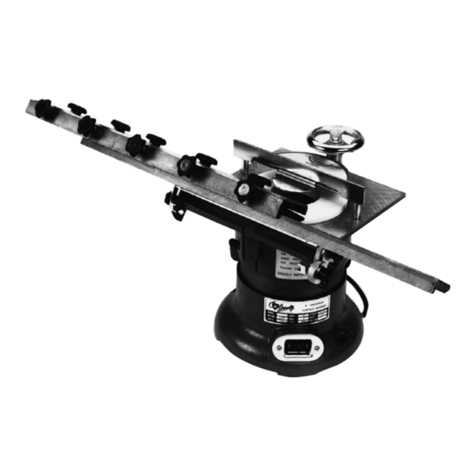
10 ENGLISH
Work mode: disc sanding w ith normal side grip
Model
Vibration emission (ah, DS) : (m/s2)
Uncertainty (K) : (m/s2)
G A 4 590 3 .6 1.5
G A 4 591 3 .2 1.5
G A 4 592 3 .6 1.5
G A 5090 2.7 1.5
G A 5091 2.7 1.5
G A 5092 2.7 1.5
Work mode: disc sanding w ith anti vibration side grip
Model
Vibration emission (ah, DS) : (m/s2)
Uncertainty (K) : (m/s2)
G A 4 590 3 .5 1.5
G A 4 591 2.9 1.5
G A 4 592 3 .5 1.5
G A 5090 2.8 1.5
G A 5091 3 .0 1.5
G A 5092 2.8 1.5
NOTE: The declared vibration total value(s) has been measured in accordance with a standard test method and
may be used for comparing one tool with another.
NOTE: The declared vibration total value(s) may also be used in a preliminary assessment of exposure.
WARNING: The ibration emission during actual use of the power tool can dier from the declared
value(s) depending on the w ays in w hich the tool is used especially w hat kind of w orkpiece is processed.
WARNING: Be sure to identify safety measures to protect the operator that are based on an estimation
of exposure in the actual conditions of use (taking account of all parts of the operating cycle such as the
times when the tool is switched o and when it is running idle in addition to the trigger time.
WARNING: T h e d e c l a r e d v i b r a t i o n e m i s s i o n v a l u e i s u s e d f o r m a i n a p p l i c a t i o n s o f t h e p o w e r t o o l . H o w e v e r i f
the power tool is used for other applications, the vibration emission value may be dierent.
EC Declaration of Conformity
For European countries only
The EC declaration of conformity is included as Annex A
t o t h i s i n s t r u c t i o n m a n u a l .
SAFETY WARNINGS
General pow er tool safety w arnings
WARNING: Read all safety w arnings, instruc-
tions, illustrations and specications proided
w ith this pow er tool. F a i l u r e t o f o l l o w a l l i n s t r u c t i o n s
listed below may result in electric shock, re and/or
serious injury.
Save all w arnings and instruc-
tions for future reference.
The term power tool in the warnings refers to your
mains-operated (corded) power tool or battery-operated
(cordless) power tool.
Grinder safety w arnings
Safety w arnings common for grinding, sanding,
wire brushing, or cutting-o operations:
1. This pow er tool is intended to function as a
grinder, sander, w ire brush, hole cutter or cut-
o tool. Read all safety warnings, instructions,
illustrations and specications proided with
this pow er tool. F a i l u r e t o f o l l o w a l l i n s t r u c t i o n s
listed below may result in electric shock, re and/
or serious injury.
2. Operations such as polishing are not to be
performed w ith this pow er tool. O p e r a t i o n s f o r
which the power tool was not designed may create
a hazard and cause personal injury.
3 . Do not convert this pow er tool to operate in
a way which is not specically designed and
specied by the tool manufacturer. S u c h a c o n -
version may result in a loss of control and cause
serious personal injury.
4 . Do not use accessories w hich are not spe-
cically designed and specied by the tool
manufacturer. Just because the accessory can
be attached to your power tool, it does not assure
s a f e o p e r a t i o n .
5. The rated speed of the accessory must be at
least equal to the maximum speed marked on
the pow er tool. A c c e s s o r i e s r u n n i n g f a s t e r t h a n
their rated speed can break and y apart.

